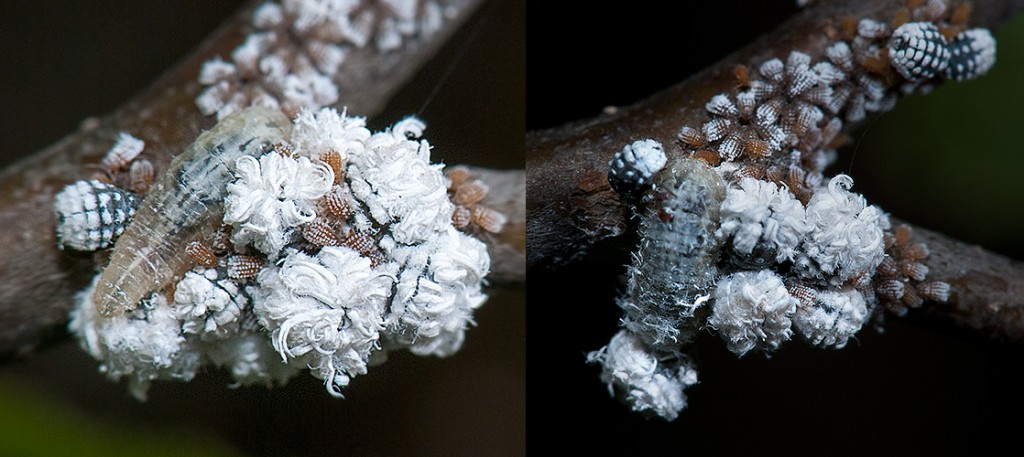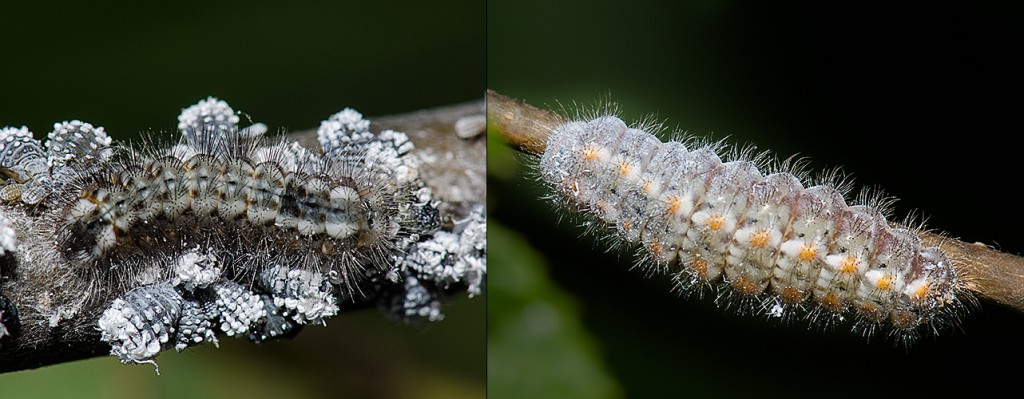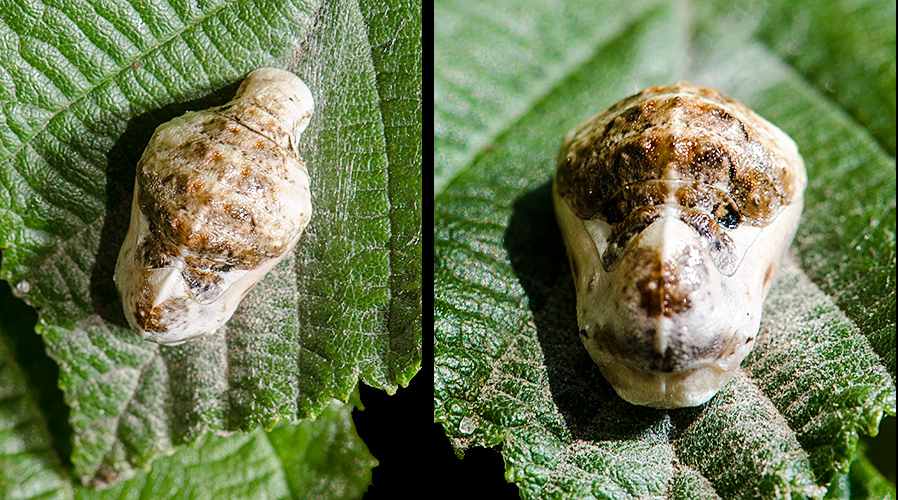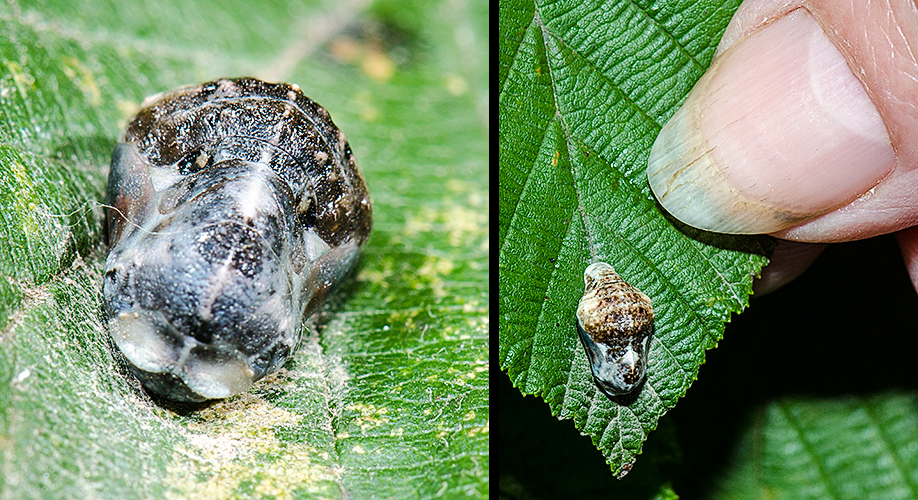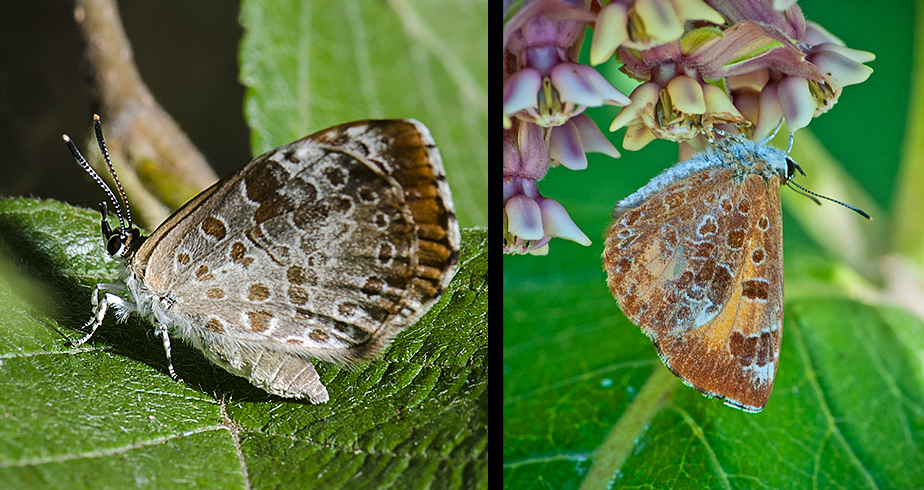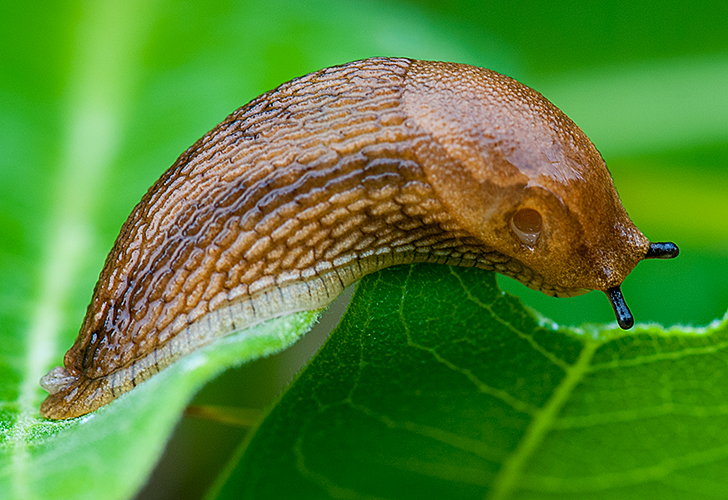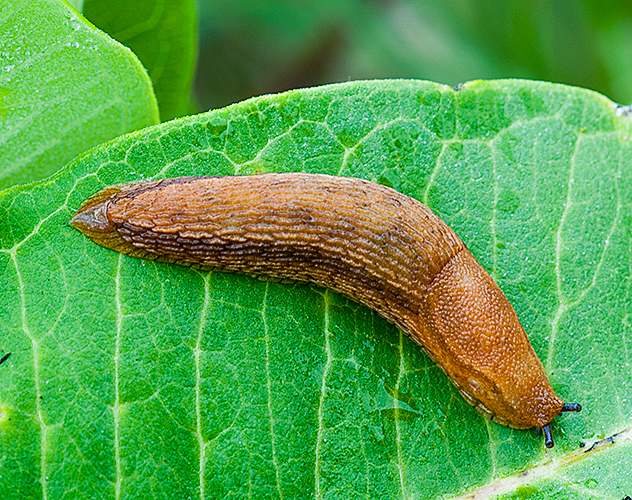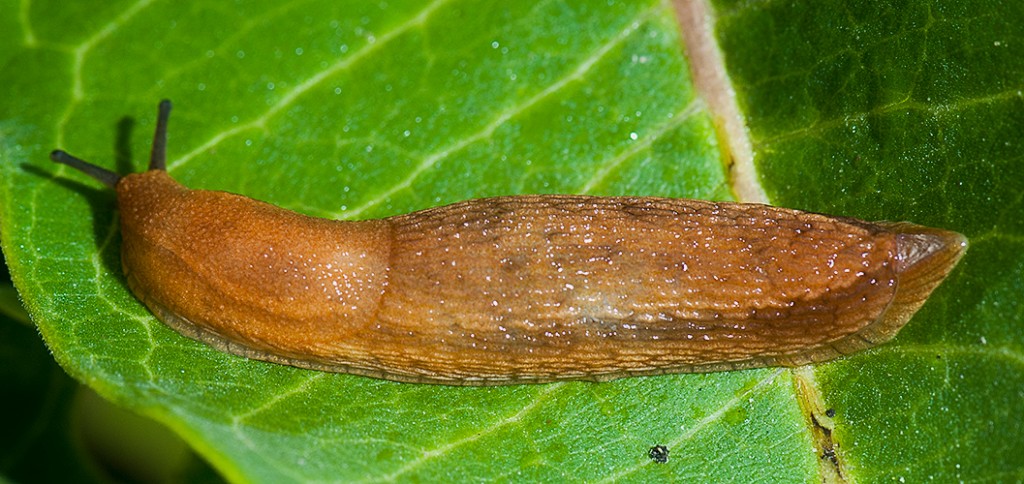The larva of the Harvester (Feniseca tarquinius) is North American’s only carnivorous butterfly. It feeds on a variety of aphid species. In Michigan, it feeds on the Alder Woolly Aphid (Prociphilus tesselatus). This diet is high in protein, allowing the larva to grow quickly from hatching to the pupa stage. It takes as little as eight days for the larva to mature.
The larva is less than 20mm (3/4 of an inch) long. Larva, pupa, and adults are sometimes found by searching near Woolly Aphid colonies. Alder Woolly Aphids allow the Harvester larva to feed on them and do not attempt to flee. Often a covering of aphids or parts of aphids obscures the larva.
We have watched Harvester larvae near Grayling, Michigan for the last five years. The last weekend in August, we found larvae, pupas, and adults. All the Harvester chrysalises we found were on the surface of Speckled Alder (Alnus incana subsp. rugosa) leaves. All these leaves were on branches with Woolly Aphid colonies. We watched several larvae leave the group of aphids they were feeding on and crawl to a leaf at the end of the branch. They attach themselves to the leaf with silk and split open their skin, which hardens into the outside of the chrysalis. We found one chrysalis that was darker than the rest and appeared to be close to hatching. It did hatch late in the morning the next day and gave us a chance to photograph the adult. The following weekend we could not find any signs of the Harvester except for a few shells from hatched chrysalises.
Adult Harvesters have a distinctive water spot pattern on their lower wings. They do not typically feed on nectar, the adult photographed on the milkweed flower was only perched not feeding. They do feed on honeydew produced by aphids, dung, and tree sap.
This was the first time I found a chrysalis. They are said to resemble a monkey’s face. However, they reminded me of an ancient Greek mask or a snake’s head. Small, only 10mm [3/8 inch] long, they are easy to pass by thinking they are a leaf gall.
The chrysalises were present only for about a week. Perhaps my timing has been wrong in other years. Maybe now that I have seen them I will be able to find them again. Many times, I have looked without success for years for a plant or insect but once I found it, I began to see it many places. Dr. Warren H. Wagner referred to this as having the correct “search image.” Once this image is in your mind, you can find the organism easier. Harvester butterflies are uncommon but occur over a wide range. Get out, look, and form your own “search image.”
Copyright 2014 by Donald Drife
Webpage Michigan Nature Guy
Follow MichiganNatureGuy on Facebook

